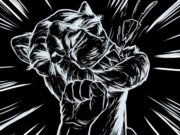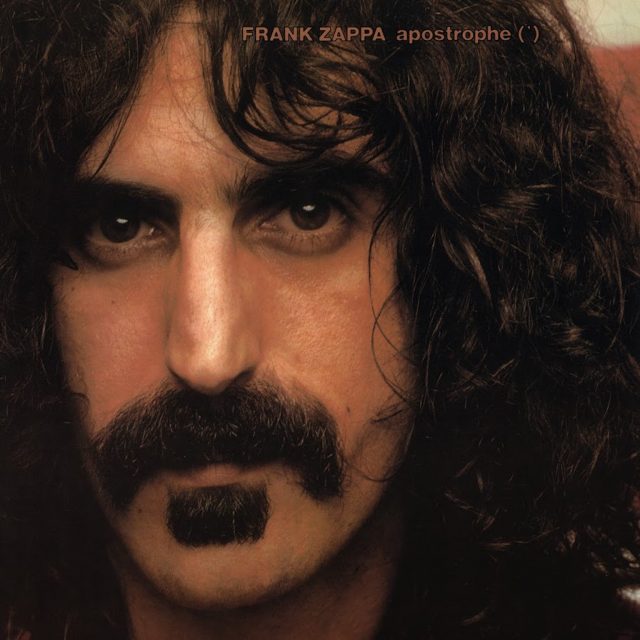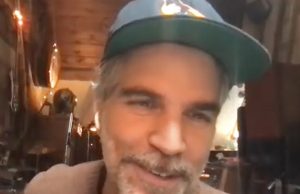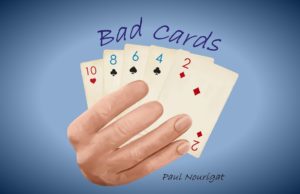THE EDITED PRESS RELEASE: “As the calendar turned to 1974, Frank Zappa was riding high. His revised rethink of The Mothers collective had begat the stone-cold classic known as September 1973’s Over-Nite Sensation, the album generally acknowledged as the gateway listening experience that invited the world writ large into the ever-expanding Zappaverse. Over-Nite Sensation also served as a direct bridge to Zappa’s followup solo release, March 1974’s Apostrophe (’).
Apostrophe (’) became Zappa’s most successful venture — speaking in strictly commercial terms, that is. It was Zappa’s first gold record in the U.S., peaking at No. 10 on the Billboard 200 chart. The forever prescient and perpetually catchy single Don’t Eat The Yellow Snow made its own splash on the Billboard Hot 100 chart, marking its territory at No. 87. Key Apostrophe (’) favorites — as the seething indictment of flim-flam gurus and phony psychics in Cosmik Debris, the ongoing exploration of racial inequality in Uncle Remus, and the examination of the unending olfactory horrors of Stink-Foot —further solidified Zappa’s hold on the public consciousness and subconsciousness alike. A half-century on, Apostrophe (’) remains a consistent go-to release in the extensive Zappa catalog, not to mention being one of its top-tier bestsellers.
In proper celebration of 50 years of Apostrophe (’), a newly expanded 50th anniversary edition has arrived a variety of formats, including a six-disc Super Deluxe Edition that features 75 tracks in total. Produced by Ahmet Zappa and Zappa Vaultmeister Joe Travers, the Apostrophe (’) 50th Anniversary Edition sports the 2024 remaster of the original album by Bernie Grundman, along with scores of additional session outtakes, alternate takes, and new versions remixed and restored by Craig Parker Adams, and remastered by John Polito. Also included are two historical live recordings from 1974 — one show from an unidentified venue in Colorado Springs, and the other from Dayton on Nov. 20, 1974. Seven of these tracks were released on the 40th anniversary in the now out-of-print collection The Crux Of The Biscuit.
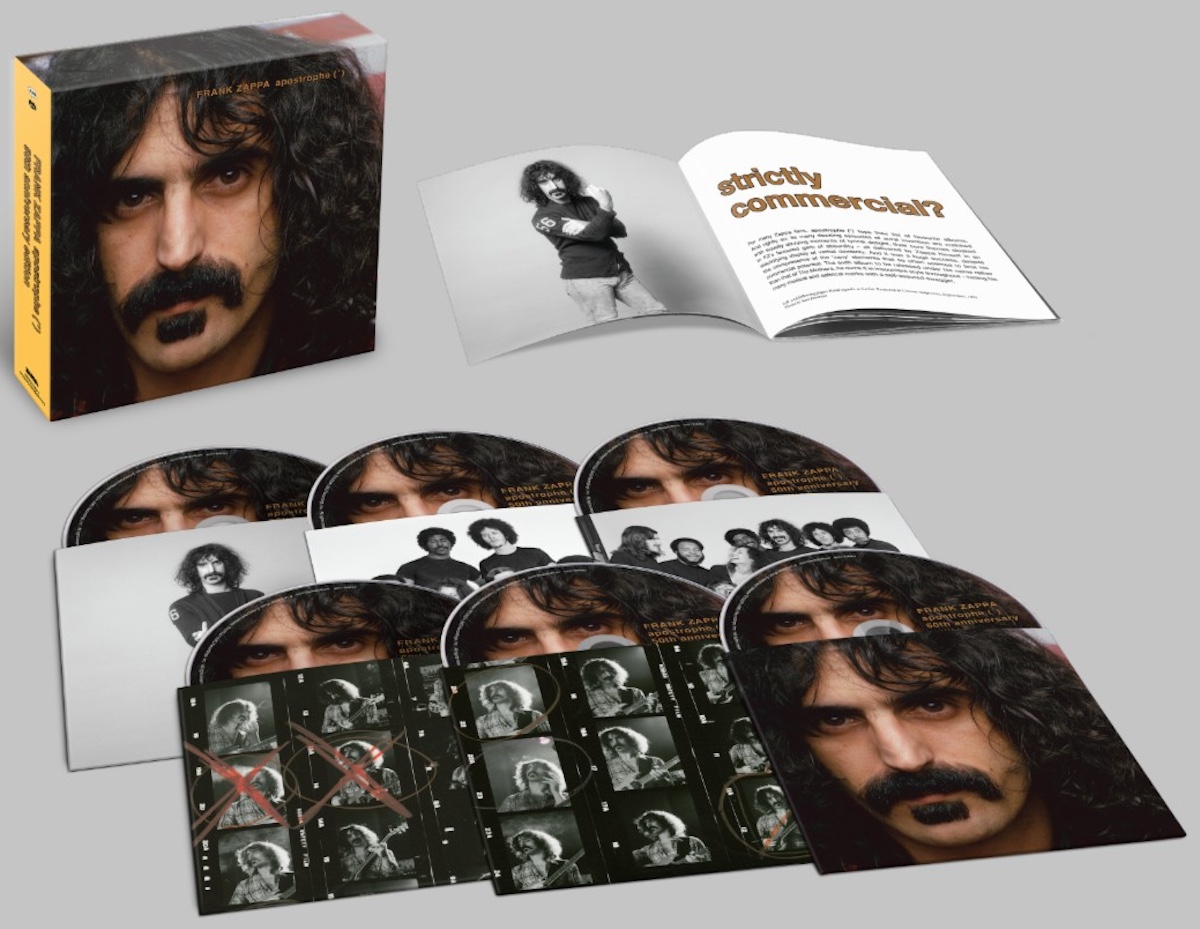
A Blu-ray in the box contains the core album newly remixed in Dolby Atmos and 5.1 surround sound by Karma Auger and Erich Gobel, the same team behind the acclaimed mixes in 2022’s Waka/Wazoo and 2023’s Over-Nite Sensation reissues. Plus it includes Zappa’s original four-channel quad mix (available for the first time since 1974) as well as the hi-res stereo 2024 remaster. The box comes complete with a 52-page booklet and photos from the archives of Sam Emerson, the man who shot the now-iconic closeup cover image of Zappa, in addition to liner notes and new essays by noted British journalist Simon Prentis and Travers.
As both an album title and concept, Apostrophe (’) looks to have initially appeared in The Vault on a few two-inch, 16-track masters that were essentially Zappa’s build reels from 1971. They contain multi-track master sources of a variety of selections from the Hot Rats sessions of 1969, the Record Plant sessions from 1970, and Fillmore East live tracks from 1971. It wasn’t until early 1974 that the additionally punctuated Apostrophe (’) album title was fully appropriated, with then-current session masters from Bolic Studios in Inglewood combined with other archive recordings from 1970 to 1972. The master tapes for Apostrophe (’) were handed in on Feb. 7, 1974. Vinyl acetates and mastering were completed at Artisan Sound Recorders, and the album’s March 22 release date was officially set.
For the balance of the bonus live material contained herein throughout Discs 2-5, Travers explained that the goal was to represent what Zappa achieved during his live concerts throughout 1974 by focusing on shows at the beginning and the end of the year. For the March tour tapes, it was hard to find a show that had releasable sound quality and featured all the music special to that particular time period. The Colorado Springs tapes — the venue is technically unidentified but is believed to have been Zappa’s March 21 appearance at Civic Auditorium — offers a number of great performances of the repertoire along with a presentable sounding recording. (The patches that fill in the gaps left by reels of tape running out were taken from The Mothers’ Salt Lake City, Utah show from March 18.)
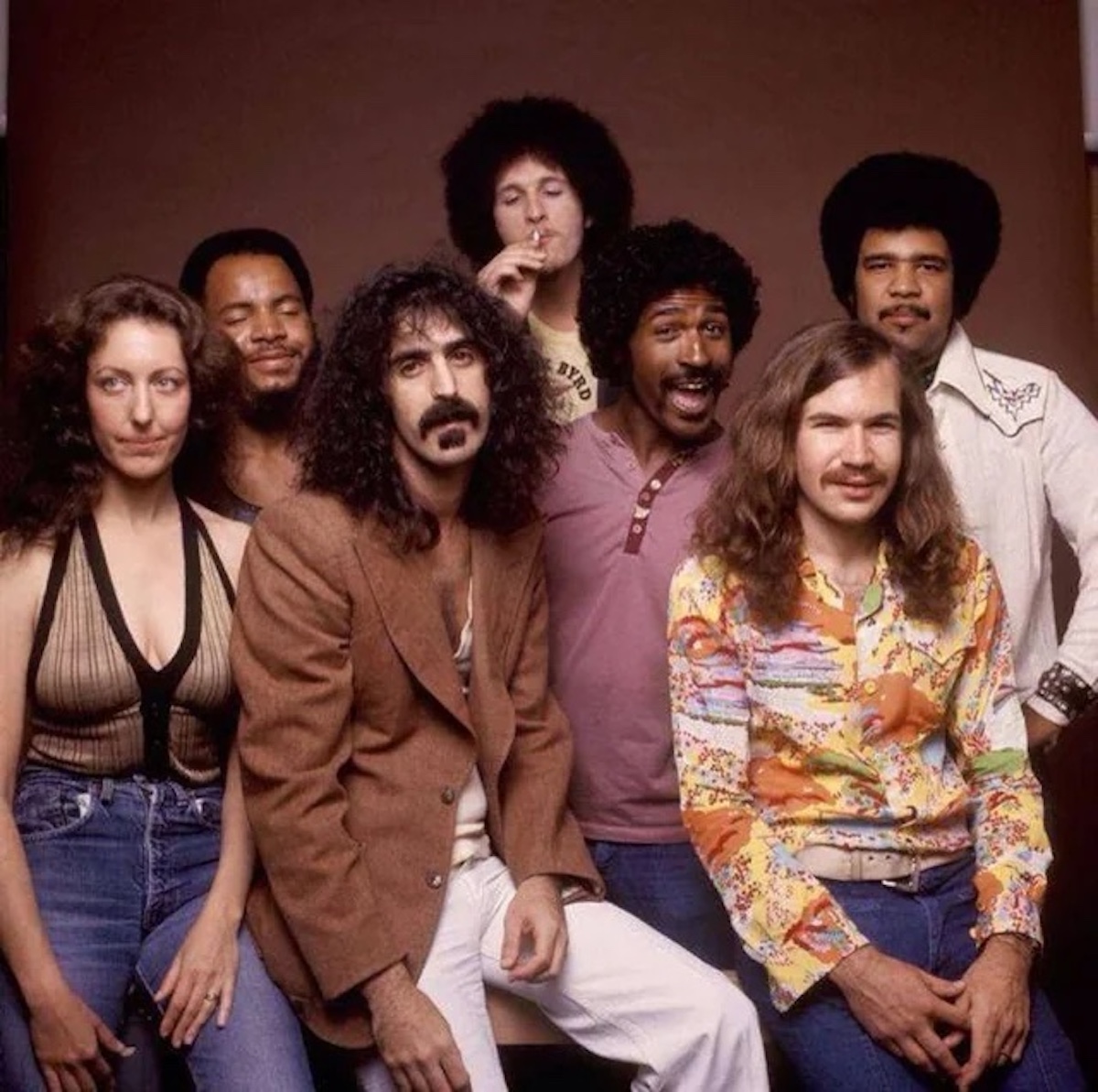
For the ’74 tour run, Zappa constructed a number of new compositions and refinements. Is There Anything Good Inside Of You? (aka Andy) and Florentine Pogen were brand new, while the rarely played Babbette was connected to the still fairly new Approximate in a genius way. And, of course, Inca Roads underwent constant change. As per usual, Zappa was recording every show on his ½-inch four-track tape machine. While the tapes are not of the highest sound quality, historically speaking these particular shows contain variants of songs that never repeated on any other tours.
As for the Dayton show from Nov. 20 on Discs 4 and 5, it is featured here for many reasons. The tapes sound very good, even though there was intermittent distortion in the right channel throughout. The band itself had transmogrified a number of times during the year, with the later configuration existing as a six-piece collective. The core group of Zappa, keyboardist/vocalist George Duke, tenor saxophonist/flautist/vocalist Napoleon Murphy Brock, bassist Tom Fowler, drummer Chester Thompson, and percussionist Ruth Underwood has long since been acknowledged as a fan-favorite and are largely considered one of the best and most popular groups Zappa ever compiled. They were well-trained, as most of them had worked with Zappa off and on for almost two years. They had great chemistry and produced a special sound, with The Maestro leading the way as the singular guitar player. By the time the Dayton show came around, there was only about a week and a half left in the tour. The Dayton show is the last surviving live document of an amazingly talented group of musicians — as witnessed by their expert execution of songs like Penguin In Bondage, Dinah-Moe Humm and Pygmy Twylyte — and it’s the gig that also concurrently signaled the end of an incredibly successful chapter in Zappa history.
The crux of the biscuit is, Apostrophe (’) continued the commercial penetration of Zappa, who entered the mid-1970s further unbeholden to the whims and wiles of the corporate slime that always seemed to be knocking at his studio door. The 50th anniversary edition of Apostrophe (’) is an amazing celebration of half a century of one of Zappa’s best, rife with even more songs and stories set to Zappa-directed music and dutifully performed for your dining and dancing pleasure.”









